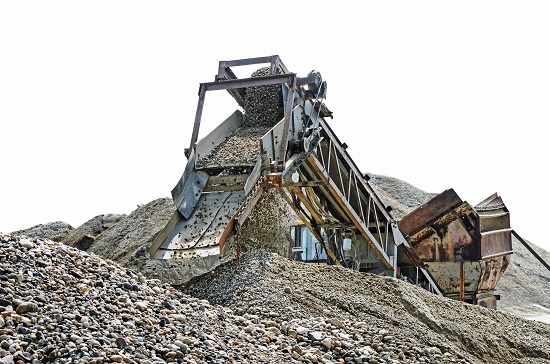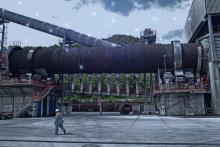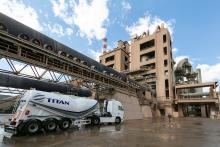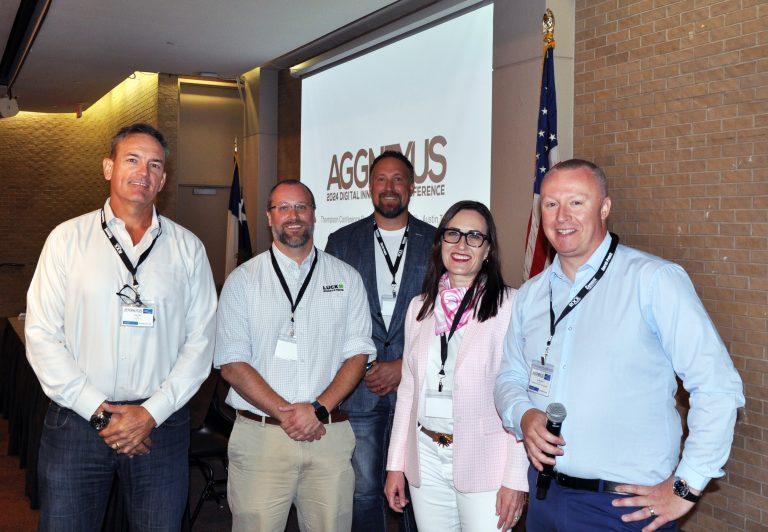
Why automate and digitalise the process at all?
It would be easy to create a long list of all the benefits following this path will deliver but the standout ones are that it provides total visibility and understanding of the operation. Most plants within the aggregates and quarrying industry will already contain some level of automation, which could be the deployment of variable speed drives (VSDs) on large motors for energy saving, through to fully automated processes and all levels between.
If the goal is to improve productivity and make the operation more efficient, then fundamentally we need to fully understand how our plant is performing right now and identify problem areas or pinch points which, if solved, immediately achieve a significant return on any initial investment.
Typically the production plant consists of a number of assets, for example, heavy machinery, bulk conveyors, pumps and the like. An enhanced deployment of automation to these assets enables data to be gathered, aggregated and analysed to give a full picture of plant performance, the more of the correct data you have, the more comprehensive that picture is.
Once a strong automation infrastructure exists, then following a path towards digitalisation is relatively easy, although the prospect of doing this still holds an element of fear for some, often because of the perception of cost that the journey will generate.
Plan, plan and plan
Before embarking on any journey towards digitalisation, a clear understanding of what the production plant is trying to achieve is fundamental to the success of the project.
It isn’t just a case of throwing as much technology as possible at the plant and hoping that this delivers everything you need. An essential element is the planning phase and fully understanding the goals of the plant, which may be, for example, to reduce energy by 15%, or improve productivity by 10%. Implementing a digitalisation plan can be delivered over a number of years and deployed in stages as long as the full end goal is understood and is being worked towards.
Embarking on the journey in this way means that each stage can be planned to meet available budget, success can be measured and return on investment monitored against forecast.
Critical business issues
During our market research we engaged with our customers in this sector and asked what their critical business issues were. What we received was a varied list but three of the most important issues, common to all of them were, overall plant performance and efficiency, energy monitoring and cost reduction and asset utilisation and availability. Applying the correct level of automation and following the appropriate path of digitalisation can deliver against all three of these and much more.
Delivering enhanced plant performance
The modern, fully automated plant landscape can be broken down into three distinct elements:
- The plant floor – production assets - automation solutions existing here will typically include VSDs, PLCs (Programmable Logic Controllers) and operator interfaces such as HMIs (Human Machine Interfaces). This area may consist of a hybrid of different automation vendors, which should not pose a problem to your chosen automation partner. Extracting data from these assets is fundamental to the whole process and investing in a network infrastructure is essential.
- Edge computing level – the data gathering point, collating all the relevant data from the plant assets. Advancement in technology for this level means that handling data can range from simply collating and passing on to full-blown data analytics capability deploying Artificial Intelligence (AI) and Advance Analytics (AA) techniques in real-time with the plant. It is also possible to add visualisation at this point to display information for operators and plant managers alike. The Mitsubishi Electric edge computing solutions are scalable to meet budget and data handling requirements.
- Enterprise Level – the ‘top end’ where all this relevant data is changed into useful information and becomes the hub of the operation and delivers, for example, plant efficiency and performance, energy monitoring and predictive maintenance information. Mitsubishi Electric’s solutions in this area are based on our GENESIS64 visualisation and analytical suite.
Energy hungry process
The aggregates and quarrying industry is an energy-hungry process. This is driven mainly by the need to use large motors to pump water to and from lagoons for sand and gravel handling and the bulk conveying of heavy aggregate materials such as roadstone and ballast over long distances. The process of cement manufacture incurs high monthly energy costs to run the production plant. This is made worse by the rising energy costs we are all experiencing right now. This means the need to monitor the plant energy usage and subsequently take steps to mitigate against high costs is arguably more important now than ever before.
High energy usage can be tackled in several ways ranging from dealing individually with the large motors that inevitably exist on plant, to gathering plant-wide energy data, analysing it and dealing with the hot spots. VSDs have always been used as energy-saving devices, but these devices have involved over time to provide a raft of diagnostic information, including early detection of motor ageing and the status of the VSD itself. Mitsubishi Electric’s FR series of VSDs include advanced energy optimisation as well as in-built safety functions for integration into PLe safety systems.
VSDs save energy by aligning with the cube law such that a small reduction in speed can result in a significant reduction in energy used for the right application. Most processes can cope with a small speed reduction, especially if mechanical restrictor valves are in line and can be opened up to achieve the same flow. Taking the example of a 55KW lagoon pump with a fairly high-duty cycle, implementing a 10% reduction in speed by fitting a VSD to the pump motor can deliver a return on investment (ROI) of under two years against the cost of the VSD and the installation. Equally importantly, providing considerable reduction in CO2 helps to meet plant sustainability goals. This ROI will be shortened by rising costs per KWh.
Making this process intelligent and moving it towards the digital world can be achieved by gathering energy data from all critical plant assets, rationalising it at the edge level and presenting it to data analysis tools at the enterprise level. Here it can be changed into useful information and visualised in charts and reports. Mitsubishi Electric’s Energy Analytix module, as part of the GENESIS64 suite, can provide energy monitoring and charting for the whole plant, individual production areas and single asset performance as required. This provides a comprehensive view of energy usage across the production facility, highlighting hotspots and monitoring improvements once remedial action is taken.

Asset availability and utilisation
Keeping the critical plant assets running and available when required is fundamental to a plant operating at optimum efficiency. Availability, in simple terms, is the ratio of the actual asset run time compared to the planned run time for that asset, and utilisation is the proportion of time the asset is used, which is an indicator of how production runs are planned. The goal would be to achieve a high utilisation figure. Both of these elements are critical in our measurement of plant productivity and efficiency, often expressed as Overall Equipment Effectiveness (OEE) and Total Effective Equipment Performance (TEEP). Clearly, the maintenance regime that we operate on the plant has a direct bearing on asset availability and utilisation.
There are three types of maintenance regimes which could be deployed:
- Reactive maintenance – this is a ‘fix when failed’ strategy which not surprisingly has a negative effect on availability and would not be recommended for any modern production plant.
- Preventative maintenance – this has been commonly used across industry in the past and involves scheduled periodic shutdowns to carry out plant maintenance. Essentially this strategy is ok as it has a positive effect on availability as regular maintenance is carried out. However, it has a negative effect on utilisation as the whole or part of the plant is shutdown regardless of whether all the assets need maintenance or not.
- Predictive maintenance – this is the digital, intelligent approach to maintenance as it uses analytics based on diagnostic data from each asset to predict when assets require maintenance or indeed are about to fail. Armed with this knowledge asset maintenance can be planned around production schedules to optimise both availability and utilisation.

Plant-level control devices such as PLCs, VSDs and HMIs come with a host of self-diagnostic information, providing an indication of the status of these devices, which is an essential part of a predictive maintenance strategy. But, it is the information they can provide about the assets they are controlling which is of real value. Early detection of asset ageing and wear is crucial.
At a component level, Mitsubishi Electric’s FR Series VSDs come with extended life of ten years on internal consumable parts such as cooling fans and capacitors and performs life checks on itself, which can be monitored by the supervisory system.
Condition-based monitoring solutions such as Mitsubishi Electric’s Smart Condition Monitoring solution provide diagnostic data and early fault detection of rotating machinery, ideal for large motors and drive trains of critical assets. Intelligent sensors monitor critical parameters such as vibration, temperature, pressure, oil and noise, and the solution delivers accurate predictive data of asset condition, required maintenance intervals and ultimately asset life. Diagnostic data needs to be gathered from each asset using the same network infrastructure as the energy data. Then analysis can be carried out, and the predictive maintenance overall picture can be built and visualised.
Mitsubishi Electric’s performance Analytix modules within the GENESIS64 suite provide the power to rationalise this data and produce predictive maintenance and plant performance information in the form of monitor screens, charting and reports, which can apply to the whole plant, individual production areas or individual assets.
Added value services
Ultimately, the delivery of maintenance has to be carried out by maintenance engineers. To aid the onsite plant engineers, Mitsubishi Electric has established the Drive Solutions Centre (DSC), which is an added-value service offered by Mitsubishi Electric through collaboration with authorised partner companies who have been specifically chosen for their knowledge, skills and expertise in VSDs and VSD solutions, as well as having a sound knowledge of automation systems in general.
The DSC can provide; installation and commission, standard and customised engineering solutions, repair services and migration of legacy equipment, energy audits and harmonic surveys, which help reduce operating costs and ensure maintained continuity of production. The DSC delivers peace of mind and helps ensure long-term sustainability.
A rocky road or navigational path?
A common myth that hopefully can now be dispelled is that only the ‘big boys’ can even think of digitalising their production process. The level of automation and digitalisation deployed can be tailored and scaled to suit the size of the operation and requirements of the plant. Deploying any level of automation and digitalisation will have a positive effect on productivity, and even simply targeting the known pinch points will deliver significant benefits for relatively modest investments.
Understanding production performance, having early detection of asset failure and achieving optimised availability and utilisation of plant assets will reduce operating costs and drive-up productivity. Although initially a daunting prospect, the road to digitalisation can be navigated successfully if planned correctly through discussion with a responsible automation vendor. With regular checkpoints along the way, the needs and goals of the production plant can be realised.










